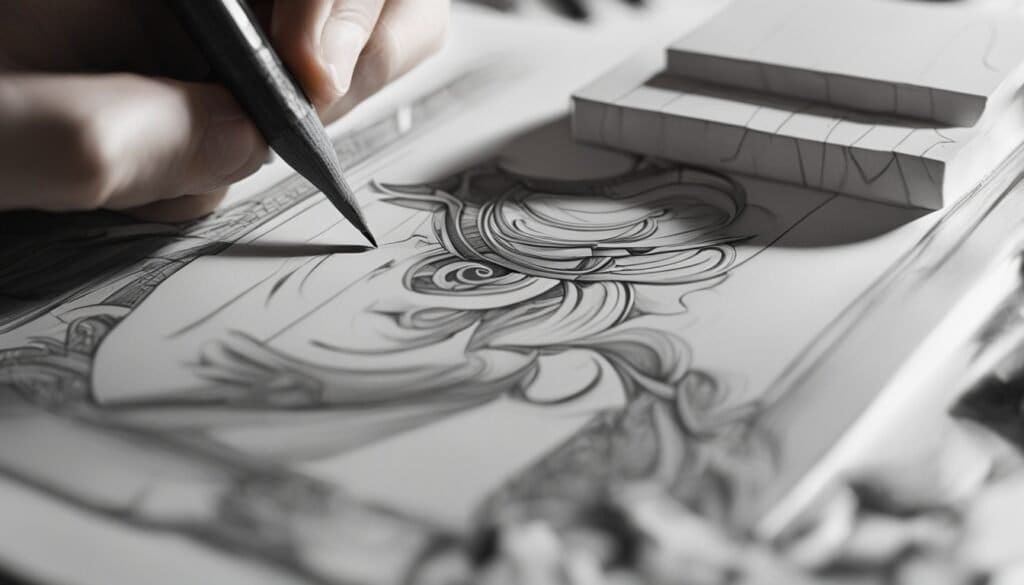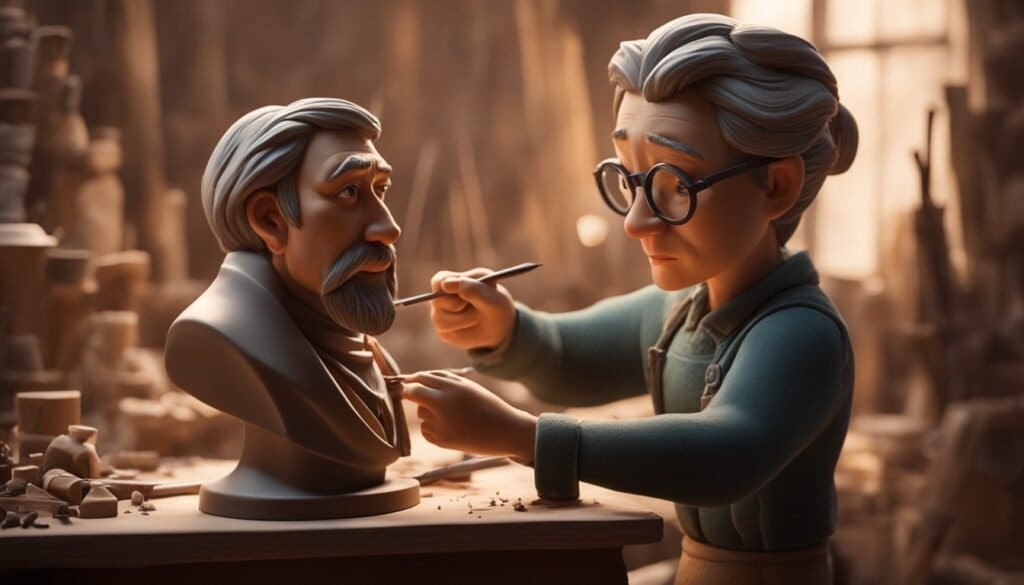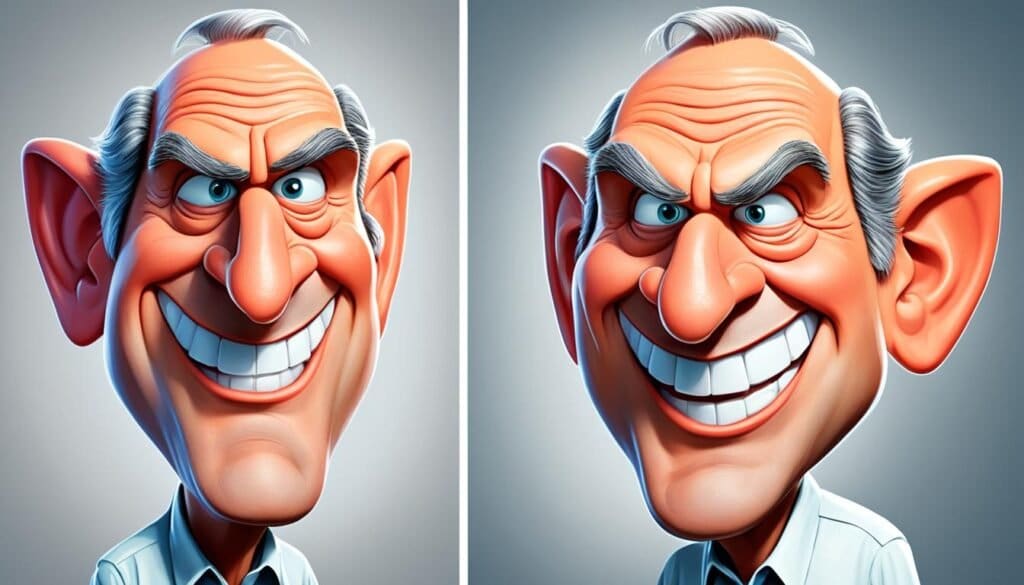- Your basket is empty.
At its core, character design mixes artistic talent with psychological insight. It creates beings that catch our attention and connect with us. This work is far more than just shaping what a character looks like. It’s a path to show who they are – their traits, choices, and past. With each new detail, a character’s story comes to life, drawing us in through visual storytelling.

To make characters people remember, designers carefully bring out their stories. They blend hard planning with freedom of creativity. Their goal isn’t just to make pretty images. It’s about forging a deep, almost hidden bond with those who look. This emotional link is the key to unfolding an exciting, ever-more-engaging tale.
Good character development sticks to distinct shapes and sizes for each character. This makes sure they stand out and look like they belong in their world. The shapes define who a character is, while sizes make them feel real. Together, they help each new creation fit perfectly into the bigger story.
Drawing or Sculpting Appealing Characters: The Heart of Visual Narratives
Drawing or sculpting appealing characters is key to telling a story visually. It involves combining art skills with an understanding of how characters look and feel. This way, designers create figures that catch the eye and touch the heart.
Combining Creativity and Psychology in Character Design
Appealing character illustration is all about mixing creativity with an artist’s knowledge of the mind. By knowing about human thoughts and feelings, artists make characters that are more than just looks. Every detail in a sculpture or drawing can share a character’s hidden story.
Physical Attributes and Aesthetics: More Than Meets the Eye
At first, a character’s beauty might be what we see. But, a well-designed character is much more than their outer appearance. Their body shape, clothes, and facial expressions show who they are and where they come from. This makes every character unique and real.
Using Silhouettes and Proportions for Instant Recognition
The outline of a character is very important. A unique silhouette makes a character easy to remember in a large group. The best figure sculpting shows characters in a way that’s both artistically pleasing and clear to understand.

For artists who want to create truly memorable work, knowing how to draw or sculpt well is vital. It’s all about mastering the details of character anatomy. This makes characters come alive, drawing the audience deeper into the narrative.
Unleashing Creativity: The Process Behind Artistic Rendering
The journey of creating characters is truly captivating. Each stroke and choice of color works towards telling a powerful visual story. It’s a mix of imagination and strategy. It turns abstract ideas into characters that draw people in.
The adventure starts with brainstorming. Different influences like culture, history, and personal tales come together. These give the characters depth and a story to share, rather than just being simple images.
- Sketching: Rapid iterations help in refining the visual aesthetics and physical dynamics of characters.
- Stylization: An essential step where simplification or exaggeration is employed to enhance the narrative drive within the character designs.
- Feedback and Collaboration: Continuous input from different creative perspectives aids in honing the characters to perfection, ensuring they align well with the envisioned story.
At the end, the success of character creation is its storytelling power. This makes artistic rendering not just a technique but a way to tell stories. Artists breathe life into characters. They live both in their stories and in the minds of the viewers. This shows the magic of creative process in character design and how visual storytelling captivates us.
Character Expression: Breathing Life into Two-Dimensional Forms
Character expression turns still images into stories that move. Artists use caricature in art and emotional storytelling through gestures to make their art come alive. This way, the audience feels part of the action.
Moving Beyond Realism: The Art of Exaggeration and Caricature
Modern artists break free from making things look real. They use exaggeration and caricature to give characters special, unforgettable looks. This makes the art more interesting and deep. Ways like making body parts big, showing funny faces, and moving in bold ways create stories that stick in our minds.
Caricature also makes art funny and points out things we might miss. Drawing big noses or showing off strong personalities can be a way to talk about society or help us recognize famous people.

Translating Emotion through Gestures and Poses
When telling stories visually, emotions are often best shown not said. The emotional storytelling through gestures is key here. Each move and face tells a deep story, especially in stories without much talking like in comics or silent movies.
- Extended arms might signify openness or excitement,
- Furrowed brows may reveal worry or concentration,
- Slumped shoulders could indicate defeat or sadness.
This silent way of storytelling brings scenes and characters to life. It makes everyone watching feel the story in their hearts.
Building Depth in Character Development: More Than Imaginary Friends
Character development is key to making flat pictures come alive. It turns them into real, deep, and relatable beings. A character backstory reveals personal histories.
Character backstory helps the audience know the character better. They learn about the character’s past, motivations, and actions. It makes the character more real and human.
Including relatable qualities makes a big difference. It makes characters feel close, not far off. Characters might have struggles, face moral dilemmas, or have lovable flaws.
Also, including cultural or historical backgrounds adds depth. It makes the story richer and more relevant to the audience. This kind of storytelling engages people more.
- Infusing characters with hobbies or interests that reflect their personality and backstory.
- Utilizing expressions, gestures, and body language to communicate internal states and emotions.
- Crafting intricate relationships that reveal deeper emotional ties and conflicts.
This detailed method of character development is vital. It connects viewers to characters on a deeper level. It transforms simple drawings into rich, engaging characters. This creates a lasting bond with the audience.
Conclusion
The journey through character design shows us that telling a story is complex. Artists everywhere expand what the visual world can offer. They create characters that are more than just drawings; they’re beings full of life.
These characters combine detailed looks with deep thoughts. This mix is the key to making characters that people really care about. It’s like telling stories with pictures that anyone can connect with.
Character design always aims for new and better ways to tell stories. Every little detail can show something new. This keeps designers dreaming up characters who are unforgettable.
Characters are key in any story. They make the tale real and powerful. Crafting them just right makes the story hit home with us. It’s the charm that pulls us all in.
So, making great characters isn’t just a job; it’s a passion. This passion is what keeps character design at the heart of creativity. It’s the love for art that shines through every story we see and read.

